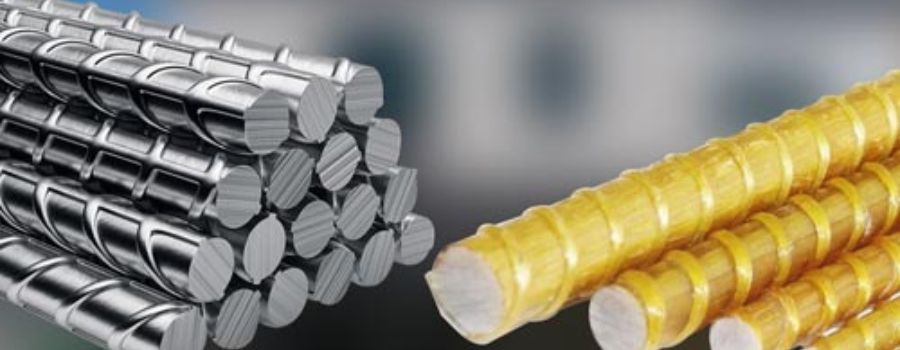Rebars form the base of concrete structures all around us. While steel rebars have been the most common and traditional choice, in recent years, GFRP rebars have transformed the industry with sustainable making, better durability, strength, and many more advantages. Below, we’ll explore the benefits of both, and which one is a stronger choice for you.
1. Material Composition
- Steel Rebar: Made from carbon steel, steel rebar comes in various grades and is often coated with epoxy or galvanized to enhance corrosion resistance.
- GFRP Rebar: Conversely, GFRP rebar is typically made from glass fiber-reinforced polymers (FRP), which naturally offer advantages like a lightweight nature and durability.
2. Strength and Durability
- Steel Rebar: Steel bars are defined by their high tensile strength and superior load-bearing capacity. However, they are also prone to rust and corrosion over time, especially in harsh environments.
- GFRP Rebar: Also defined by a high tensile strength, GFRP rebars stand apart from the steel alternative by offering better tolerance to external stress. They also offer superior corrosion resistance, making them perfect for marine, chemical, and high-moisture environments.
3. Corrosion Resistance
- Steel Rebar: When exposed to moisture and chemicals, this rebar is more prone to corrosion, leading to potentially weak structures.
- GFRP Rebar: Naturally resistant to corrosion, these rebars also stay resilient to corrosion for a longer lifespan. Additionally, they don’t even require an extra coating of additional protection.
4. Weight and Ease of Installation
- Steel Rebar: Due to their heavy weight, these rebars also require significant transportation and installation labour.
- GFRP Rebar: Relatively lighter, these rebars are easier to handle, transfer and install with reduced labour costs.
5. Thermal and Electrical Conductivity
- Steel Rebar: Naturally conducts heat and electricity, which can bring many disadvantages in high-voltage or thermal-sensitive applications.
- GFRP Rebar: Naturally on-conductive and thermally stable, making it ideal for infrastructure near power lines, MRI rooms, and electromagnetic-sensitive environments.
6. Cost Considerations
- Steel Rebar: While they are generally more affordable upfront, they also come with higher maintenance and replacement costs due to corrosion.
- GFRP Rebar: These rebars incur a higher initial cost but offer long-term savings with high durability and low maintenance costs.
7. Applications
- Steel Rebar: Ideal for conventional construction projects such as residential, commercial, and infrastructure projects where corrosion is not a primary concern.
- GFRP Rebar: Ideal for projects in corrosive environments, including marine structures, bridges, wastewater treatment plants, and chemically exposed industrial settings.
Which One Should You Choose?
While both GFRP and steel rebars have their advantages and disadvantages, each comes with unique offerings. If you’re looking for an affordable and conventional reinforcement solution, the steel rebar steps up as a solid choice. On the other hand, if a structure project demands high corrosion resistance, lightweight materials, and long-term durability, GFRP rebar serves as a better investment. It is imperative to understand the project needs and environmental conditions before choosing an option.
For high-quality GFRP Rebars, Duraneo’s GFRP Rebars offer unmatched durability and advantages over conventional solutions. Know more about them here.

